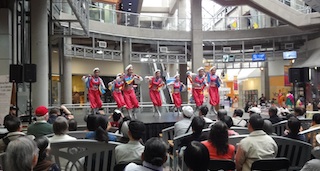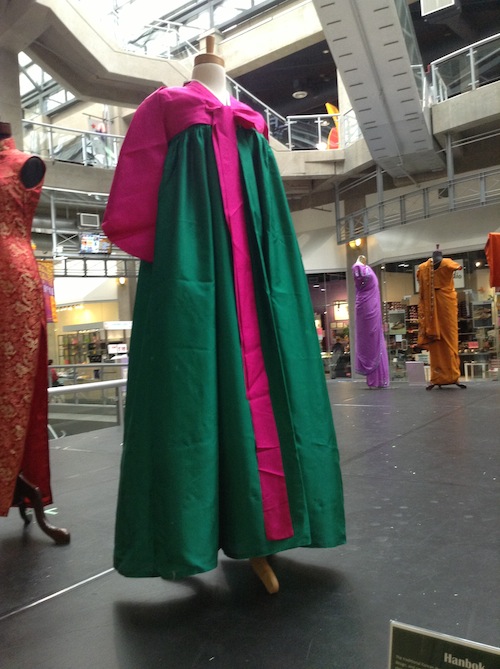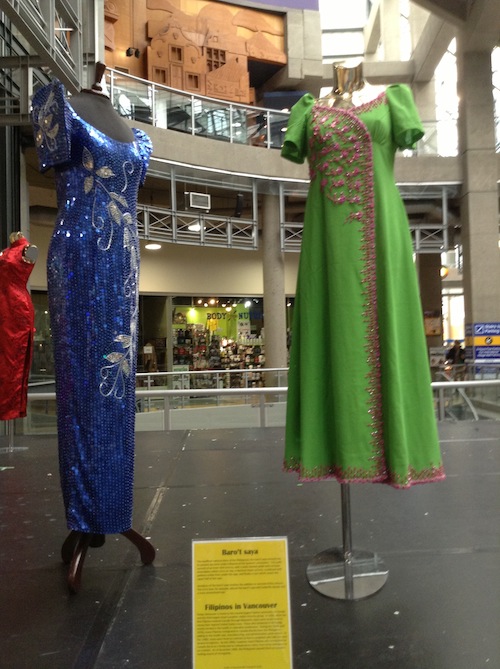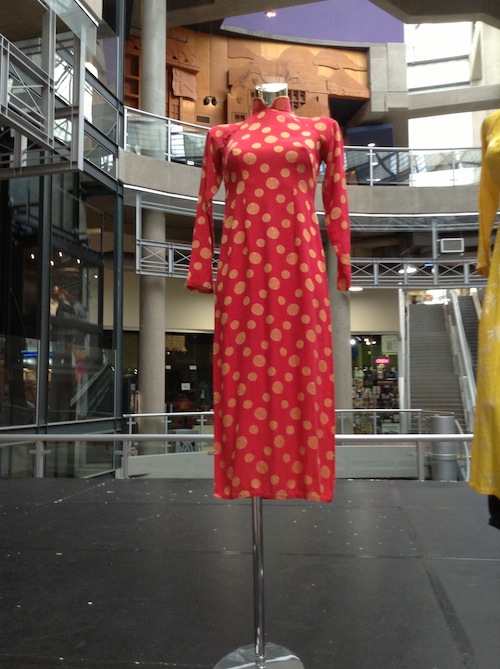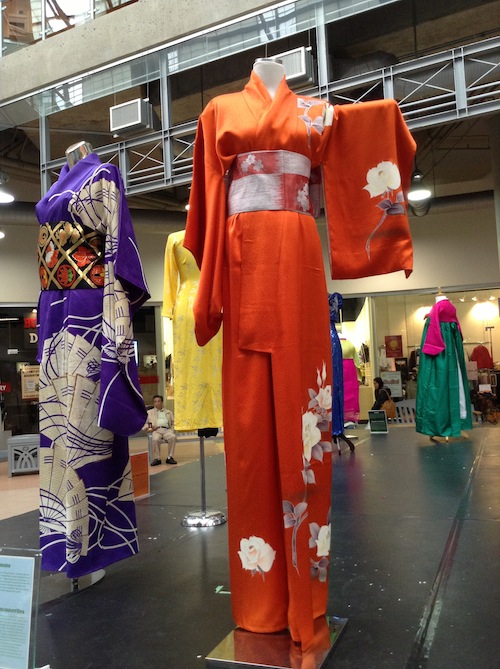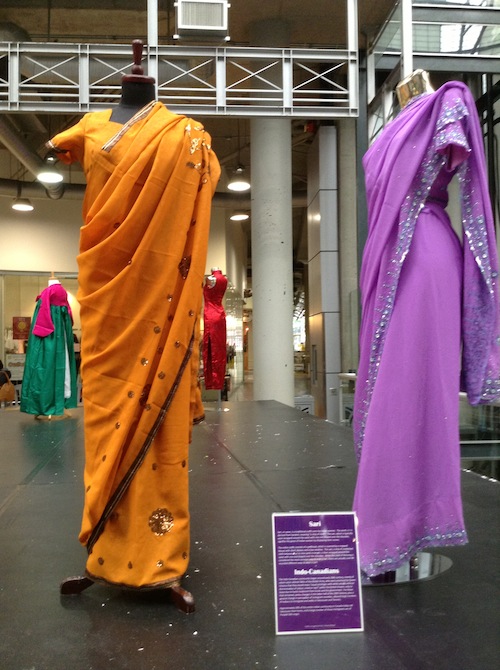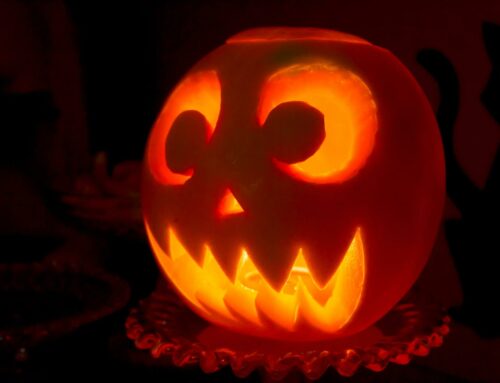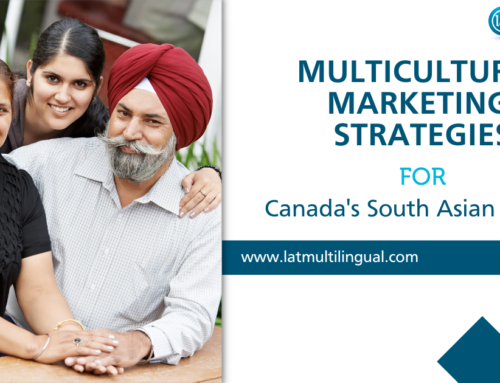Vancouver is home to a growing number of Asian communities, and their wealth of cultures and languages is what makes our city truly unique. In recognition of the important contribution immigrants have made to Canada, the federal government declared May to be Asian Heritage Month in 2002. Since then there have been yearly celebrations around the country.
In Vancouver, the International Village Mall celebrated Asian Heritage Month with an Exhibition and Day of Celebration (May 11). Part of the exhibit featured traditional outfits from Vancouver’s six largest Asian communities in Vancouver. The following descriptions are adapted from content at the exhibition that was written by Henderson Development Marketing Coordinator Joyce Lee. For more information on the Asian Heritage Month Exhibition and Day of Celebration, check out Joyce’s blog!
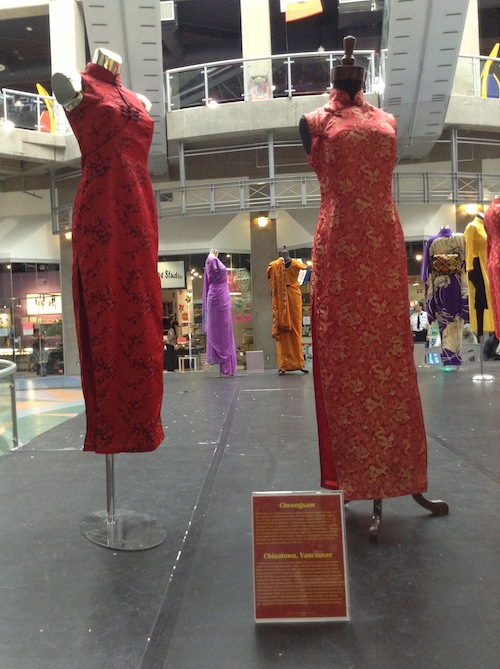
Chinatown, Vancouver
The Cheongsam (qiapao in Mandarin or ‘mandarin gown’ in English) is a traditional one-piece dress for women. Originally a loose fitting, floor-length, long-sleeved gown, the dress has transformed into a form-fitting, high-cut style.
The exhibit mentions the discrimination Chinese workers faced at the hands of the government and other Canadians, which led them to create a tightly bonded community, now Chinatown. Initially formed by those who remained after completing the Canadian Pacific Railroad, Vancouver’s Chinatown is the largest in the country.
This community included entrepreneurs who worked to overcome discrimination and create prosperity. International Village Mall is close to Chinatown’s boundaries, with its distinctive entranceway, paved sidewalks, and red dragon streetlamps.
Koreans in Vancouver
The Hanbok is traditional Korean dress that is characterized by its luxurious design, simple lines, and bright colours. The fabric is coloured with natural materials, such as flower petals. The outfit is comprised of undergarments, a snug jacket, and a full wide skirt. The hanbok is usually worn for traditional festivals and celebrations such as weddings.
The Korean-Canadian community is relatively new in Vancouver compared to other groups, such as Indo-Canadians or Chinese-Canadians. The first Korean immigrants arrived in BC in 1926, but it was not until the mid 1970s that the population really started growing.With over 60,000 Korean-Canadians currently living in Vancouver, the city has seen the establishment of churches, restaurants, clusters of stores, and offices now known as “Koreatown”. Koreatown is located in Downtown Vancouver’s West End along Robson Street between Nicola and Denman Street. Vancouver is also becoming an increasingly popular destination for Korean students who wish to learn English, which has led to a concentration of language schools in Downtown Vancouver.
Filipinos in Vancouver
The baro’t saya is the unofficial national dress of the Philippines. It evolved under the influence of Spanish colonization and consists of an inner shirt (kimona), a wide-sleeved jacket with intricate embroidery (baro), a starched shawl (pañuelo), a patterned petticoat, and a tapis that covers the upper half of the saya.
Vancouver has the second largest Filipino community in Canada and the third largest Asian Canadian visible minority group. The first Filipinos arrived in Canada through Manitoba in 1930 intending to renew their expired United States visas. Direct immigration from the Philippines took off in the 1960s and 1970s. Initially these immigrants were sponsored or on contract, but they now immigrate to Canada as families or independents. In December 2008, the Philippines became Canada’s leading source of immigrants, ahead of China.
Little Saigon, Vancouver
The Ao Dai is a traditional Vietnamese outfit that is commonly worn by women today after its revival in the 1990s. Once condemned as decadent by Vietnamese rulers, the Ao Dai is a form fitting, knee or ankle length tunic worn over trousers. It emphasizes feminine beauty and is commonly worn at weddings, formal occasions, and celebrations. It is also worn by female staff at Vietnamese companies as a work uniform, and can be seen in white on students in South Vietnam. It is a status symbol because only women of higher social standing wear it.
Initially, there were only a few hundred members of the Vietnamese community in Canada. They arrived in Vancouver as refugees of the “re-education camps” of the 1970s. Now there are over 30,000 Vietnamese people in Vancouver, the fifth largest ethnic minority group in the city.
A 2006 census estimated that over 13,000 people in Vancouver speak Vietnamese at home. In 2011, Vancouver city council voted to designate an area as “Little Saigon”, a name its residents had unofficially named it years ago. Little Saigon, a 3km stretch of the Kingsway corridor between Fraser and Nanaimo streets, is decorated with banners and street signs.
Japanese Vancouverites
The kimono is a full-length, T-shaped robe worn wrapped left over right and secured with a belt (obi). It is worn by men and women of all ages, but is mostly worn by women and children on special occasions. Older men and women may wear a kimono on a daily basis, but professional sumo wrestlers are required to wear a kimono whenever they appear in public.
The first permanent Canadian residents of Japanese descent were Nigano Manto and Yo Oya. They settled down around Powell Street, and the area bordering Chinatown became a popular settlement area.
The Japanese community grew, and the Asahi Baseball League was formed in 1914. It competed with teams from various cities at Oppenheimer Park. A popular festival in the Japanese Vancouverite community is the Powell Street Festival, which began in 1977 to commemorate the centennial of Manto’s arrival in Canada. To this day people of all ages and cultures celebrate the festival.
Indo-Canadians
The Sari, or saree, is a traditional outfit worn by Indian women. The word sari is derived from the Sanskrit for “a strip of cloth”. A sari is typically worn wrapped around the waist with one end draped over the shoulder. It signifies the grace of Indian women by displaying their curves.
In the early 20th Century the Indo-Canadian community began to form. They were mainly veteran Sikhs of the British Army who were promised “equal privileges with white people without discrimination of colour, creed, or race” within the British Empire by Queen Victoria. Unfortunately, many had to leave due to harsh treatment from the government and locals.
Policy changes in the latter half of the 20th Century and the shifting perception of immigrant societies has allowed large numbers of Indians to immigrate and settle in Vancouver. Approximately 20% of the Canadian Indian community is living in Vancouver, and a very large number of these residents are of Punjabi Sikh origin.
Vancouver’s Multiculturalism
The exhibit at International Village Mall points to a growing interest in Vancouver’s multicultural landscape. Businesses that are looking to expand their customer base in Vancouver would do well to engage these local communities. As awareness increases, so does the desire to reach out. This presents a great opportunity for businesses, but it also highlights an important fact: there is no such thing as the “Asian” Market. Instead, there are a multitude of Asian cultures with their own interests, values, and languages. Reaching out to Vancouver’s local communities is not only a matter of being multilingual, but multicultural. A carefully planned cultural approach on social and traditional media will go a long way in growing engagement and fostering deeper and wider participation in the evolution of our diverse cities.

